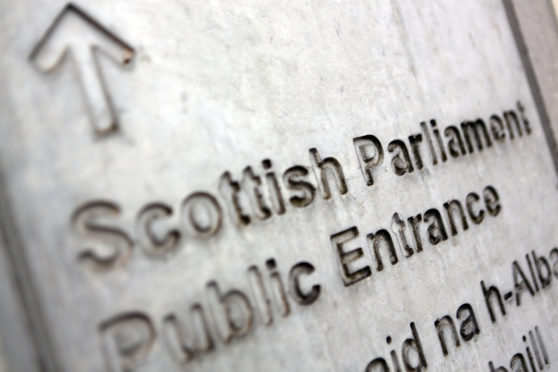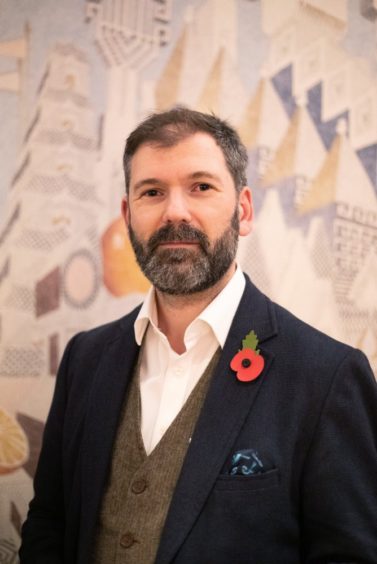He’s only been in Number 10 for a year and already there’s talk of who will replace Boris Johnson.
That may say something about what a divisive figure he is. He can win over enough of his own MPs, but a significant minority remain entirely unconvinced.
Or it may be a symptom of the modern pace of politics.
Fuelled by social media, the narrative bowls on apace and the cast of characters must be swapped more and more rapidly.
Will we ever see a PM last 10 years as Tony Blair and Margaret Thatcher did? Even John Major was in Downing Street for seven years and he was rubbish by any metric.
Or it may speak of the lack of imagination among Westminster reporters.
The PM is in no danger, yet some journalists can’t find anything else to write about.
Despite the fact we’re in a once-in-a-century pandemic and ahead of a once-in-a-millennium economic collapse.
Most likely it’s a combination of the three.
But for all his opponents may not like it, any discussion about the PM’s future is a sign of how healthy the Conservative Party is.
It has heirs to spare.
Rishi Sunak is currently streets ahead in polls asking who should be the next Tory leader.
Michael Gove is always going to be angling to switch from stage director to star of the show.
And the likes of Matt Hancock and Jeremy Hunt will run again when a vacancy arises, even if that is not for a very long time.
That list of runners and riders is notable for its lack of women. There’s no doubt the Conservative Party has a woman problem.
But as on so many matters the leadership broadly reflects its members. The Conservative membership is enamoured with Johnson.
They knew they were electing a man who would never be seen in a t-shirt bearing the slogan: ‘This is what a feminist looks like’ (His predecessor Theresa May as well as Nick Clegg and Ed Miliband have been seen in such attire in their time).
They are getting what they wanted.
Compare the jockeying in London, where no vacancy exists, to the situation in Scotland.
As the constitutional question once more tops the news agenda there are plenty of opportunities to compare and contrast Holyrood with Westminster.
When it comes to talent and ambition, London trumps Edinburgh.
Where is the leadership pipeline in the Scottish parliament?
Actually, scrap that, where is the leadership? The SNP are riding high with Nicola Sturgeon while Willie Rennie still does a fine job with the Lib Dems, although his gimmicks are wearing thin.
The Conservatives and Labour in Scotland are led by two men who are, let’s be honest, ridiculous.
They feel like caricatures traipsing round the brains of political comedians but each time rejected for being too obvious, and therefore dull.
How the mighty have fallen. Labour, famously once the party of Donald Dewar, Robin Cook and Gordon Brown, have slowly gone down through the gears to end up idling with Richard Leonard.
The Conservatives decided to go with the emergency stop, switching from the charisma and competence of Ruth Davidson to Jackson Carlaw.
He’s parroting the same solid Unionism Davidson sold so well but he ends up sounding like a golf club bore who heard a good joke once and is now trying to pass it off as his own original wit.
Both only got the gig because the alternative was no more inviting.
Leonard will get turfed next May after Labour fail again at the Holyrood elections. Heaven knows where they’ll turn next.
Jackie Baillie has somehow found herself deputy leader. She’s got oomph and ability but as someone who’s been in Holyrood long enough to have served in the Scottish Executive she hardly represents the future.
The SNP can’t be smug in all this, however. Derek Mackay looked to be Sturgeon’s heir apparent until his spectacular blow-up in March.
Kate Forbes stepped into his shoes ably. But she’s politically immature and surely not ready to step up any time soon.
The big briefs at the cabinet table are taken by MSPs who pose Sturgeon no threat. It’s likely she prefers it that way.
Jeanne Freeman at health is a bumbler with front. John Swinney at education has a track record that suggests what he makes up in manners he lacks in management.
As long as Sturgeon’s poll ratings soar, none of this matters, apparently. The SNP will win next year’s election, so there’s no danger of one of the other parties’ clottish commanders moving into Bute House.
And no challenge will come from within for fear of rocking a boat seemingly heading towards independence.
But that’s where the issue does matter. If Scotland is to become independent it will need a healthy political culture, not a cult of leadership.
It will need a variety of parties debating as equals, offering credible visions and coming to the best conclusions for the nation’s future.
That’s how politics works. And that’s when it’s exciting and inspiring.
Winning an independence referendum would make Nicola Sturgeon a name for the ages.
If she thinks that’s on the cards she ought to also be thinking about a legacy beyond the history books.
That means celebrating different views, welcoming debate, and fostering a political culture that will let Scotland flourish no matter its constitutional future.
James Millar is a political commentator and author and a former Westminster correspondent for The Sunday Post

